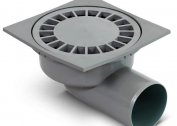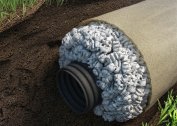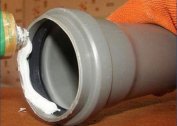The most common method of water disinfection - chlorination - due to the cheapness of raw materials. Along with this, the remains of the active substance are capable of forming a chemically active sludge at the bottom of reservoirs, where treated wastewater is discharged. This creates an unfavorable ecological situation for animals and fish living in the water. Therefore, it is necessary to consider methods that can be useful for arranging autonomous sewers, the drains of which are discharged into nearby water bodies.
Scope of application of disinfection of water by ultraviolet
 One of the new methods of bacteriological treatment is the installation of ultraviolet disinfection of wastewater. The method is based on irradiating a liquid with rays of an invisible spectrum, in which DNA and RNA molecules of pathogenic microorganisms are destroyed.
One of the new methods of bacteriological treatment is the installation of ultraviolet disinfection of wastewater. The method is based on irradiating a liquid with rays of an invisible spectrum, in which DNA and RNA molecules of pathogenic microorganisms are destroyed.
The scope of the installations is wide: industrial enterprises with a large amount of wastewater, private septic tanks or biological stations. After the final stage - irradiation - the liquid can be reused or discharged into water bodies without the risk of an epidemic.
The installation can be used not only for sewage liquids, but also for drinking water, since ultraviolet does not change its chemical and physical properties.
Principle of operation
Passing through the cell walls of microorganisms, ultraviolet causes irreversible effects in them, after which the bacteria lose their ability to reproduce. This is the most important factor, since pathogenic microorganisms cause damage to human health if they begin to multiply.
The advantage of the method is that many bacteria have become resistant to chlorine and other chemicals, therefore they do not lend themselves to its influence and continue to actively share. It is impossible to adapt to ultraviolet, so the method is more reliable.
If the water networks that transfer liquid for reuse to people are in poor sanitary condition, re-infection may occur. For this, after ultrafiltration of wastewater, chlorination is used, which has a longer period of action.
Wastewater Disinfection Equipment
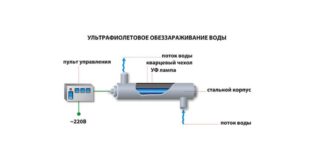 The equipment consists of several blocks. The largest of them is the disinfection chamber, where water is pumped and irradiation occurs. The main element is ultraviolet lamps, which are located in quartz cases. Covers perform a protective function. In addition to lamps, they also have sensors for monitoring radiation power and temperature. To ensure that sewage does not pose a hazard to the environment, a power of at least 65 mJ / square centimeter is required.
The equipment consists of several blocks. The largest of them is the disinfection chamber, where water is pumped and irradiation occurs. The main element is ultraviolet lamps, which are located in quartz cases. Covers perform a protective function. In addition to lamps, they also have sensors for monitoring radiation power and temperature. To ensure that sewage does not pose a hazard to the environment, a power of at least 65 mJ / square centimeter is required.
The electronic control cabinet is the place where the starting devices are located that support the installation in operating mode.
The security unit automates the operation of the system. In order for the ultraviolet lamps to work fully, the system periodically flushes out the coating on the covers.
Depending on the amount of wastewater, plants of various capacities are used. Several types of materials are used for the manufacture of high and low pressure lamps. Some of them are more energy-intensive, but have a short life. Others last longer, but give weak radiation.
Method effectiveness
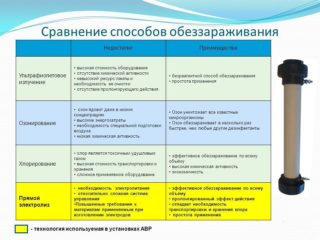 Ultraviolet radiation is a natural method that does not affect human health in any way, except with prolonged direct exposure to the body.
Ultraviolet radiation is a natural method that does not affect human health in any way, except with prolonged direct exposure to the body.
The method is much cheaper than other environmentally friendly methods - ozonation or biological treatment. Sometimes it is necessary to replace lamps with new ones so that the radiation power is maintained at a high level.
Radiation instantly kills pathogenic microbes even when using minimum power values.
You can apply ultra-high doses of radiation - this does not change the physical and chemical properties of water. After irradiation, much less chlorine can be used, which favorably affects the health of people who use water.
Disadvantages of the method
The method is not effective against some bacteria that are rare, so chlorination is used to prepare drinking water as a backup disinfection method.
In turbid water, the degree of penetration of the rays is lower, therefore, membrane hollow fiber filters are used to treat wastewater. The degree of preliminary purification of water from coarse impurities should be high, otherwise they will serve as a shelter for microbes and they will not receive the required radiation dose.
The action of the rays is short. If, after exiting the bactericidal chamber, water enters dirty pipes, it again becomes dangerous.
The presence of iron impurities in the water reduces the efficiency of the installation; therefore, additional filters must be installed in areas with a high oxide content.
